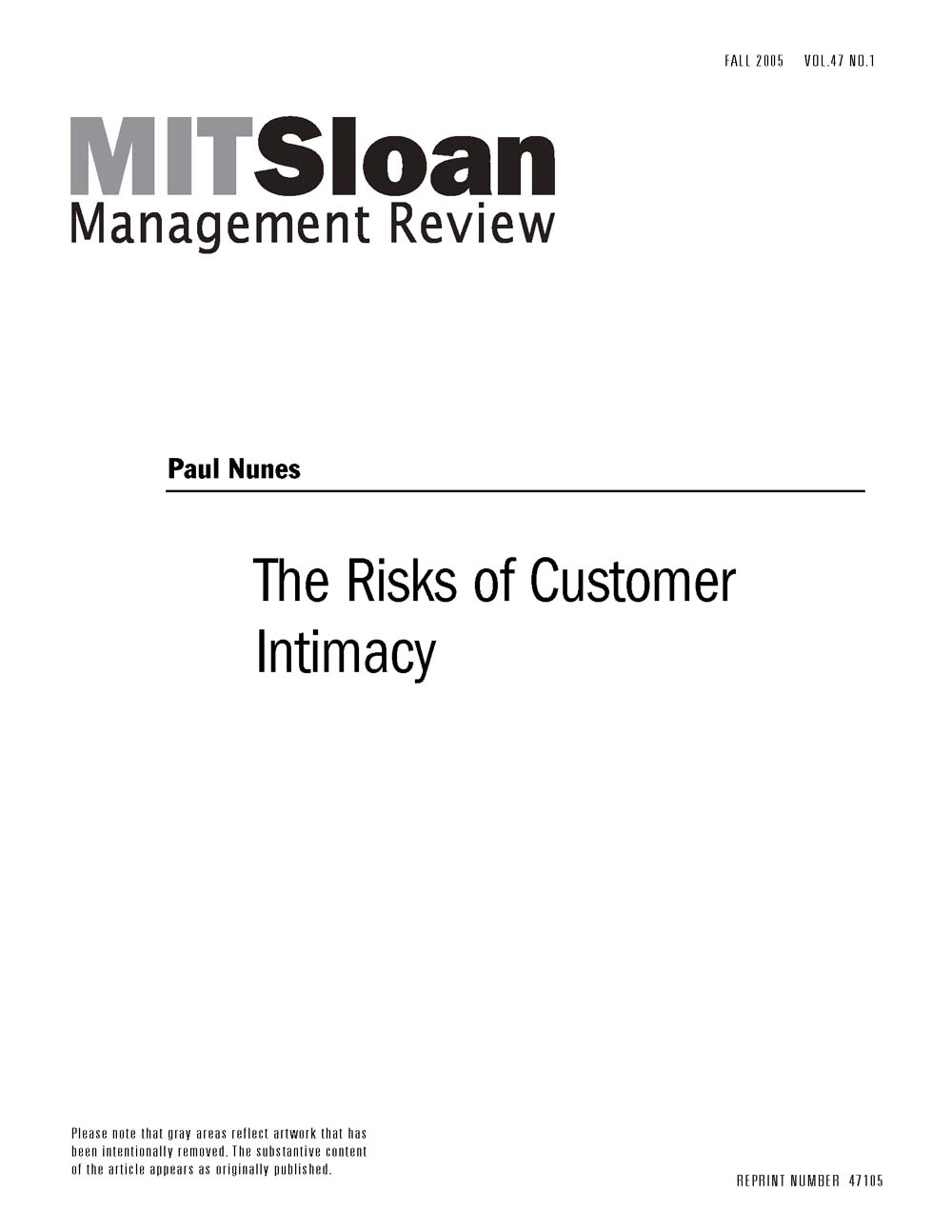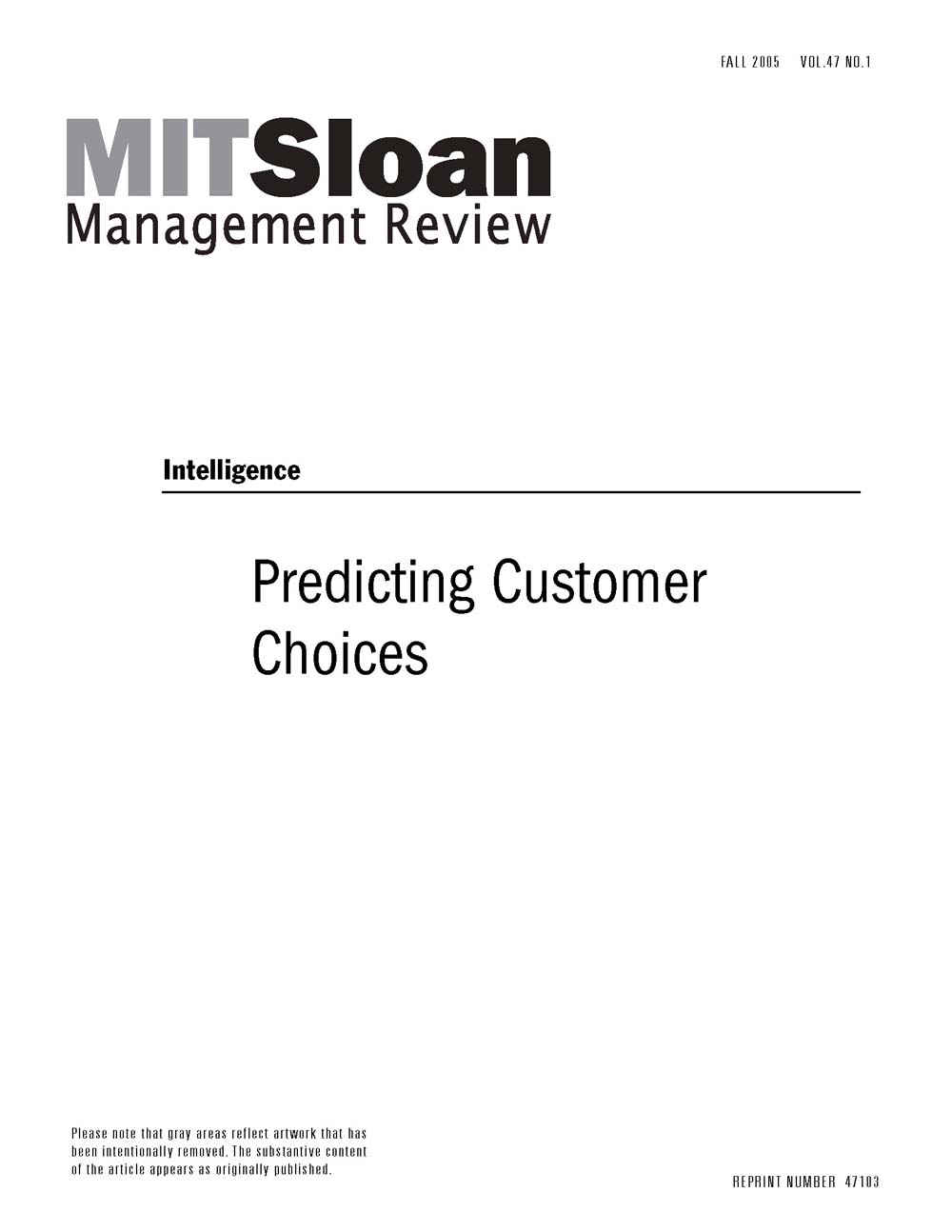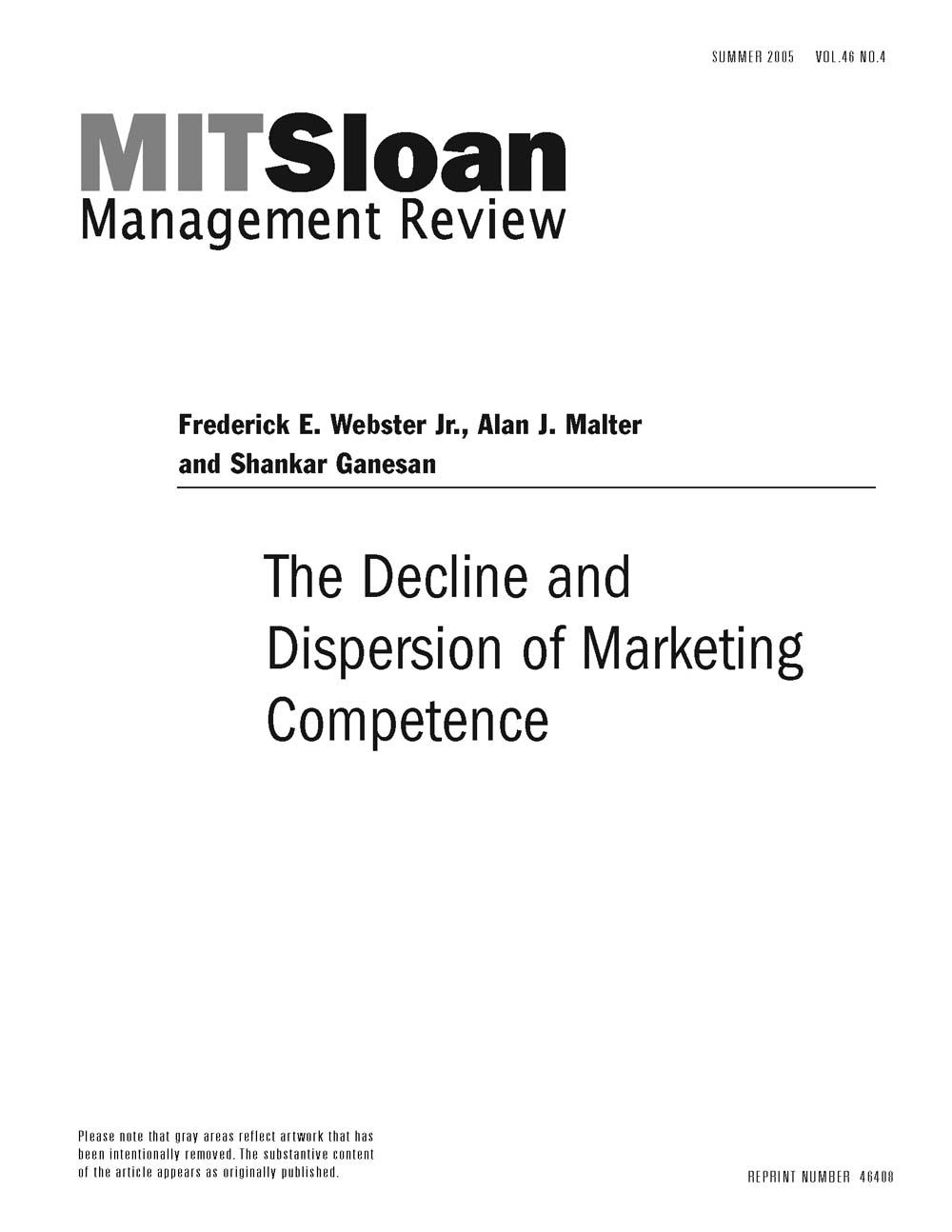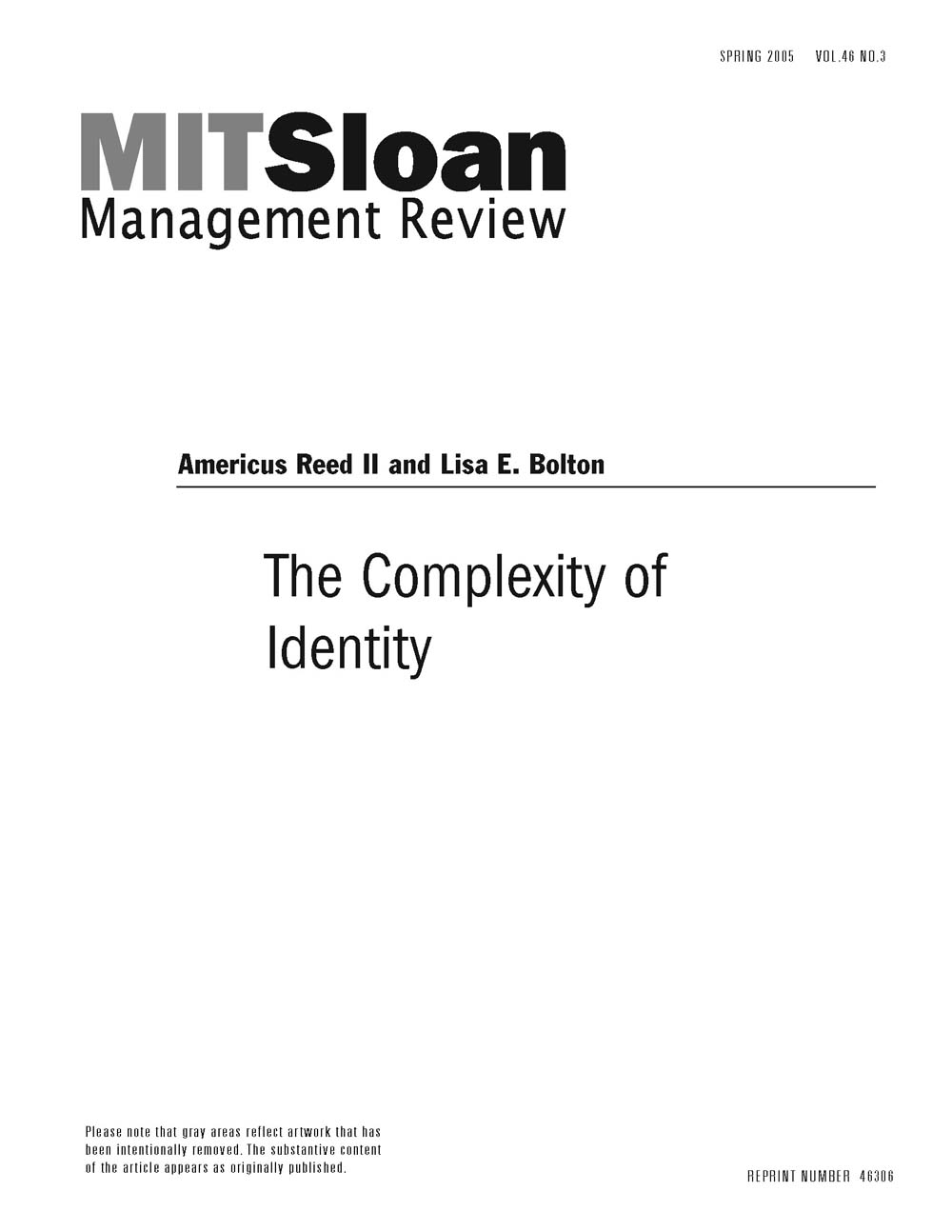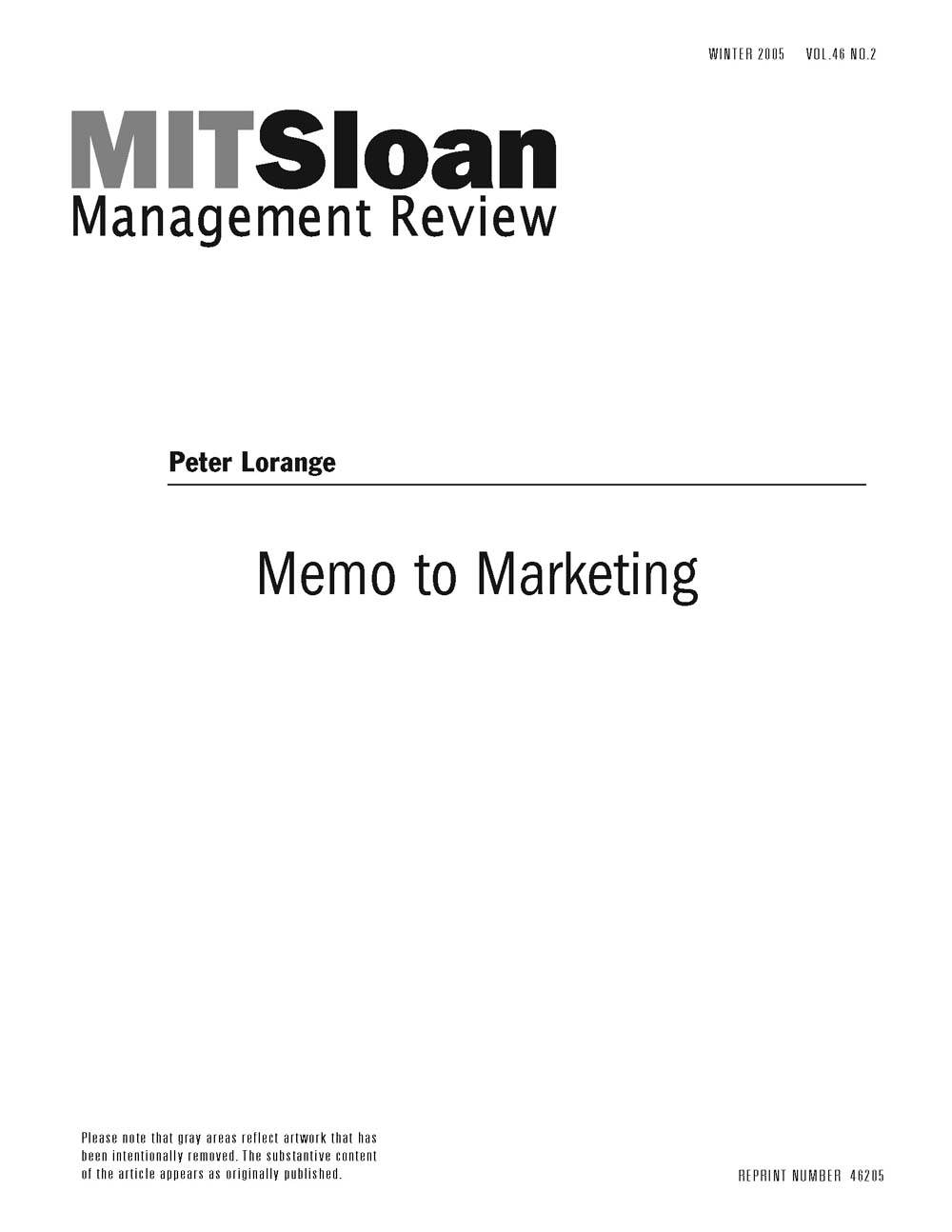Too much familiarity with customers can backfire, but engaging in multisided conversations can manage the risks.
Marketing
Page 18 of 23
-
Predicting Customer Choices
Recent research has greatly improved management's ability to anticipate customer wants.
-
The Decline and Dispersion of Marketing Competence
In many companies, there has been a marked fall-off in the influence, stature and significance of the corporate marketing department. Today, marketing is often less of a corporate function and more a diaspora of skills and capabilities spread across the organization. By itself, the disintegration of the marketing center is not a cause for concern, argue the authors, but the decline of core marketing competence certainly is. For this article, the authors undertook a series of in-depth interviews with leading marketing executives and chief executive officers to clarify the root causes of the decline. Their research identifies eight distinct factors that contribute to marketing's waning influence -- among them a worrying "short-termism," significant shifts in channel power and marketing's inability to document its contribution to business results. The consequences are not immediate, but they are far-reaching: Absent a core of marketing competence, say the authors, the corporate brand will suffer, product innovation will weaken, and prices will be less robust. However, the fact that marketing does continue to influence corporate strategy in some companies suggests there are opportunities and viable approaches for building marketing competence as a source of competitive advantage. The article suggests four key issues facing marketing management, placing the focus not on restoration of the corporate marketing function but on the rebuilding of marketing competence across the organization.
-
Diversifying Your Customer Portfolio
RESEARCH BRIEF: A dynamic array of different customer types makes for a stronger business model.
-
The Complexity of Identity
People categorize themselves on the basis of demographics, social roles and shared consumption patterns, and these various identities are both numerous and fluid, changing over an individual's lifetime and across situations. That fact is not fully recognized by traditional demographic and psychographic techniques, and the labels that consumers use to define who they are do not necessarily correspond to the variables that marketers typically rely on. A new approach -- identity marketing -- better captures the complex process of how people's sense of who they are influences their purchase decisions. To be sure, the complexity of identity-based judgments presents both opportunities and obstacles for marketers, but companies often fail to appreciate this. In fact, many marketing blunders can be traced back to a fundamental misunderstanding of customer identity. Common mistakes include the following: (1) selling new products solely on their features, (2) failing to solidify first-mover advantage, (3) fighting the competition head-on, (4) sticking with what's worked before, (5) underestimating low-involvement products, and (6) attacking negative word-of-mouth. Identity marketing helps companies avoid such mistakes by providing a deeper understanding of how customers become strongly attracted to the brands and products that are linked to their multiple -- and sometimes seemingly contradictory -- identities.
-
Achieving the Ideal Brand Portfolio
To optimize a portfolio of brands, companies can use a five-step approach. First, managers decide on the brands to review. Second, they analyze all of the brands on the resulting short list with respect to each one's contribution to the company. Third, they assess the brands according to current market performance (traction) and future prospects (momentum). Fourth, the brands are classified along those three dimensions (contribution, traction and momentum), allowing managers to identify both challenges and opportunities. The process enables companies to sort their brands into different categories: power (a brand that needs to be defended ferociously and deployed judiciously), sleeper (a brand that with a little fast tracking can build into a power brand), slider (a valuable brand that has lost momentum, is slipping backwards and needs immediate intervention to prevent meltdown), soldier (a solid brand that contributes quietly without the need for much management attention), black hole (a brand that sucks up resources and may or may not ever pay out), rocket (a brand that is on its way to power-brand status), wallflower (a small, underappreciated brand with very loyal customers, often underpriced and undermarketed) and discard (a brand that should have been mothballed years ago). Lastly, the objectives for each individual brand are tied together into an overall plan, which will include any changes to the roster, brand architecture and resource allocation.
-
How Companies Turn Buzz Into Sales
The good word from devoted customers may not always be the most effective promotional tool.
-
Managing Corrosive Customers
Strategies for mitigating the negative effects of nasty on-the-job encounters.
-
Memo to Marketing
The marketing function has been under increasing pressure to deliver. Its challenge is to see new business opportunities before they become obvious, to lead the market and not be led, to have a proactive vision rather than a copycat mentality. To accomplish that, a ""facts-based"" analysis -- using quantitative data from customer surveys, market studies and other sources -- can help tremendously, but such approaches can sometimes be dysfunctional, leading to endless statistical analyses that obfuscate key points. Companies thus need a broadened approach to marketing research that takes into account conversations with customers, observations from the field and insights from executives, among other alternative sources of valuable information. The author enumerates seven key tasks that marketing must perform within an organization to enable -- not stifle -- innovation.
-
What Are Brands Good For?
Brands are an indispensable part of modern business. That is true in large measure because of a brand's remarkable efficiency in "aggregating" consumers -- reaching large numbers of people with a promise to deliver a clearly stated benefit that sets it apart from competitors. But the information revolution is undermining the logic of aggregation, the very source of brand power. In fact, it is becoming evident that in an information-rich environment, consumer disaggregation is vastly more efficient and profitable than aggregation. Using customized publications, e-mail, direct mail, Web sites and call centers that are based on a common platform of consumer information, companies are demonstrating that they can effectively and efficiently drive consumer behavior through two-way communications. Common underlying databases ensure that each interaction is personalized, regardless of the channel through which it occurs. And each interaction with the consumer builds the consumer database further, making future interactions even richer. The implications of the information revolution for the role of brands in business are far-reaching. Many of the strategic and tactical tasks entrusted to brands can now be performed better, less expensively and more profitably at the level of consumer segments. And companies' brand-centric structures are not suited to marketing initiatives that are based on reaching segments or individuals. Given this changed environment, the author calls on companies to rethink three core areas of brand management: the consumer relationship, the channel relationship and the organization of brand management. To support his case, he draws on detailed examples involving Kraft, Procter & ; Gamble and Tesco.



